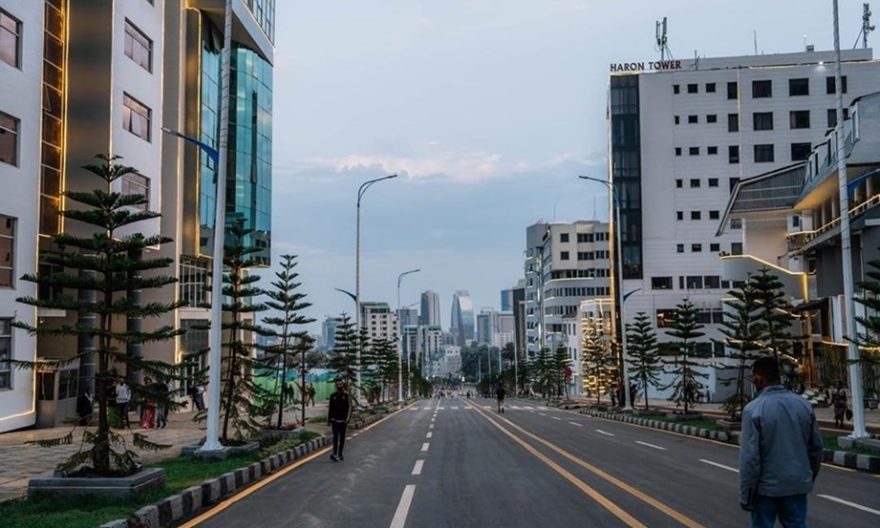
Urbanization is the process of increasing population density in urban areas, leading to the growth of cities and towns nationwide. It involves individuals moving from rural regions to cities in search of better economic opportunities, higher living standards, and improved access to services and facilities. This necessitates well-developed infrastructure, such as the Addis Ababa corridor construction.
Urbanization signifies the transformation of rural landscapes into urban areas with infrastructural development, commercial activities, and cultural diversity. Cities and towns become centers of economic activity, creativity, and social interaction, influencing a country’s overall growth.
Urbanization is typically measured by the percentage of a country’s population living in cities, with urban inhabitants residing in municipalities or areas with high population density and built-up infrastructure. Rates and scales of urbanization vary by country and region, driven by economic growth, industrialization, population trends, government policies, and social dynamics.
In developing countries, urbanization is a significant phenomenon that is reshaping society, economies, and ecosystems. The rapid growth of populations in developing countries is leading to swift urbanization and environmental challenges as people migrate from rural areas to urban centers in search of better opportunities.
The rapid urbanization in developing countries can strain infrastructure development, resulting in inadequate housing, traffic congestion, lack of clean water and sanitation facilities, and insufficient healthcare and education services. This, in turn, impacts the environment through issues like air and water pollution, deforestation, loss of biodiversity, and increased greenhouse gas emissions. Responsible management of urban growth is crucial to mitigate these effects.
In Ethiopia, urbanization involves the transition of rural landscapes into urban settings with infrastructural development, commercial activities and cultural diversity. Ethiopian cities and towns are becoming hubs of economic activity, innovation, and social interaction, influencing the country’s overall growth and environmental conservation efforts to combat climate change.
Considering these factors, the Ethiopian government has taken steps to enhance the city’s aesthetics. Following political reforms in mid-2018, the government, including the Addis Ababa City Administration, began beautifying the city, as the name suggests.
One notable effort is the current corridor development initiative. The Corridor Development Program in Addis Ababa is a planned urban development program aimed at enhancing transportation infrastructure, improving connectivity, and fostering economic growth along key corridors in the city. The program aims to create vibrant and sustainable urban spaces that stimulate economic activity, enhance mobility, and improve residents’ quality of life.
According to Ethiopian Prime Minister Abiy Ahmed (PhD), the Addis Ababa corridor development project aims to create a clean and convenient environment, resulting in significant benefits for many individuals. In addition to other advantages, the project has generated more jobs, raised living standards, and improved the overall cleanliness of the environment.
Therefore, “Mayors of cities in Ethiopia discussed the proposal before its implementation in Addis Ababa. They are now expected to replicate this successful effort in their own cities.” The corridor development benefits the general population, and all stakeholders are encouraged to contribute. “We should not be content with this outcome as there is much work to be done in the future,” he added.
Expanding the lessons and benefits of corridor development initiatives across the country has numerous advantages. For instance, the corridor development initiative enhances transportation infrastructure by constructing roads, bus rapid transit (BRT) systems, pedestrian walkways, and cycling lanes along main corridors in Addis Ababa. Improving transportation connections reduces traffic congestion, enhances accessibility, and promotes eco-friendly modes of transportation.
Moreover, the corridor development program aims to rejuvenate urban areas along key corridors by enhancing public spaces, improving streetscapes, and encouraging mixed-use development. This urban regeneration plan seeks to create dynamic and attractive districts that stimulate economic activity while enhancing residents’ quality of life.
The program also seeks to stimulate economic growth and investment in the corridors by creating business-friendly environments, boosting commercial activity, and attracting private sector participation. The program’s objective is to enhance connectivity and accessibility to generate jobs and economic opportunities within the community.
Scholars have noted that the ongoing corridor construction in the capital has significantly transformed the city’s appearance. Solomon Tefera, a lecturer and researcher at Ambo University, highlighted that Addis Ababa’s environment is characterized by aging structures that do not adhere to urban planning standards and fragmented road infrastructure. The city’s plan has not been updated to reflect changing circumstances.
“However, with the corridor development, I have witnessed the city being revitalized and new developments that will alter its appearance taking place.” Addis Ababa is increasingly becoming a desirable place to live and a tourist destination to enjoy. The corridor development work has expanded vehicular and pedestrian pathways, transforming former dump sites into recreational areas. Solomon emphasized that corridor development will elevate the city’s status and serve as the foundation for establishing a modern urban center.
In Ethiopia, urbanization varies by region and is influenced by economic growth, industrialization, population trends, government policies, and social dynamics. The Ethiopian government has implemented various urban development initiatives and policies to address the challenges and opportunities associated with urbanization, including the Addis Ababa corridor development program, encompassing infrastructure development, housing provision, land use planning, and environmental sustainability.
Therefore, integrating urbanization plans with corridor development programs like Addis Ababa is crucial for ensuring comprehensive urban development to create sustainable, inclusive and well-connected urban environments. Providing robust transportation infrastructure, promoting economic growth, fostering social inclusion, and encouraging community engagement are essential to safeguard the environment and combat climate change.
BY EPHREM ANDARGACHEW
The Ethiopian Herald July 7/2024




